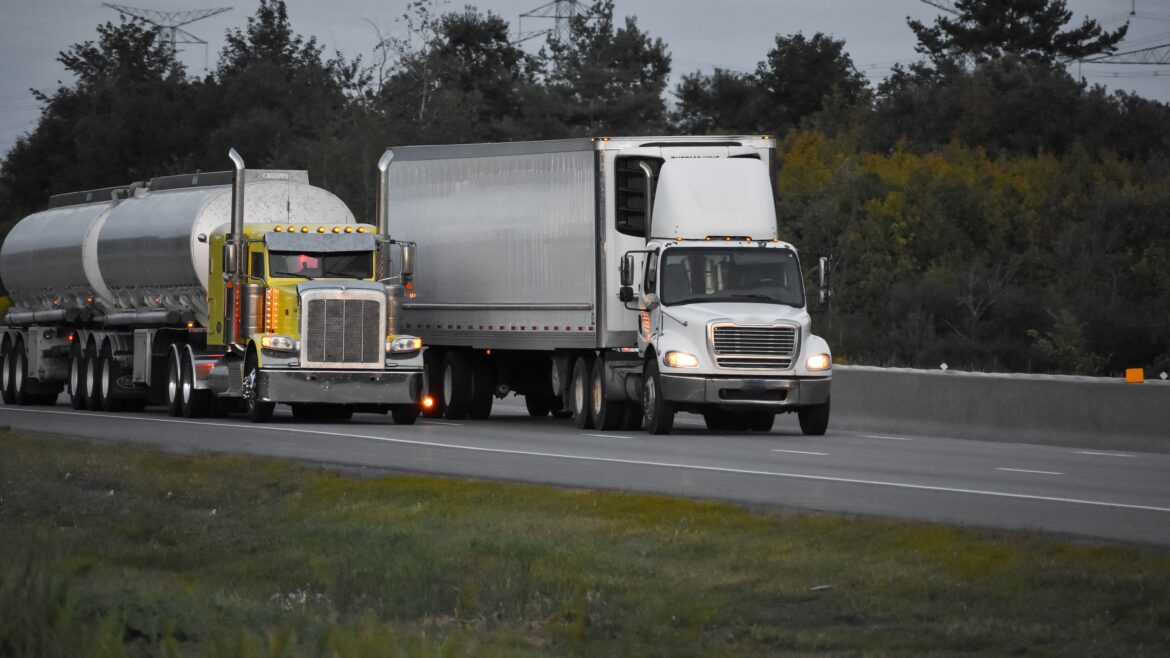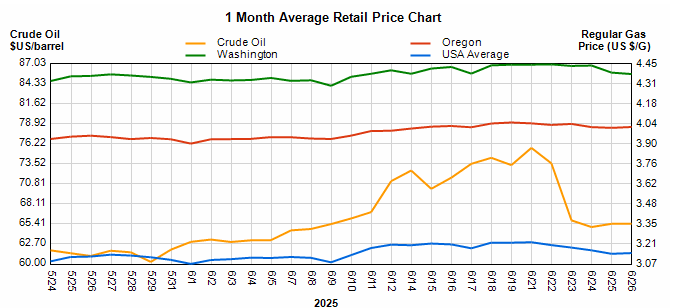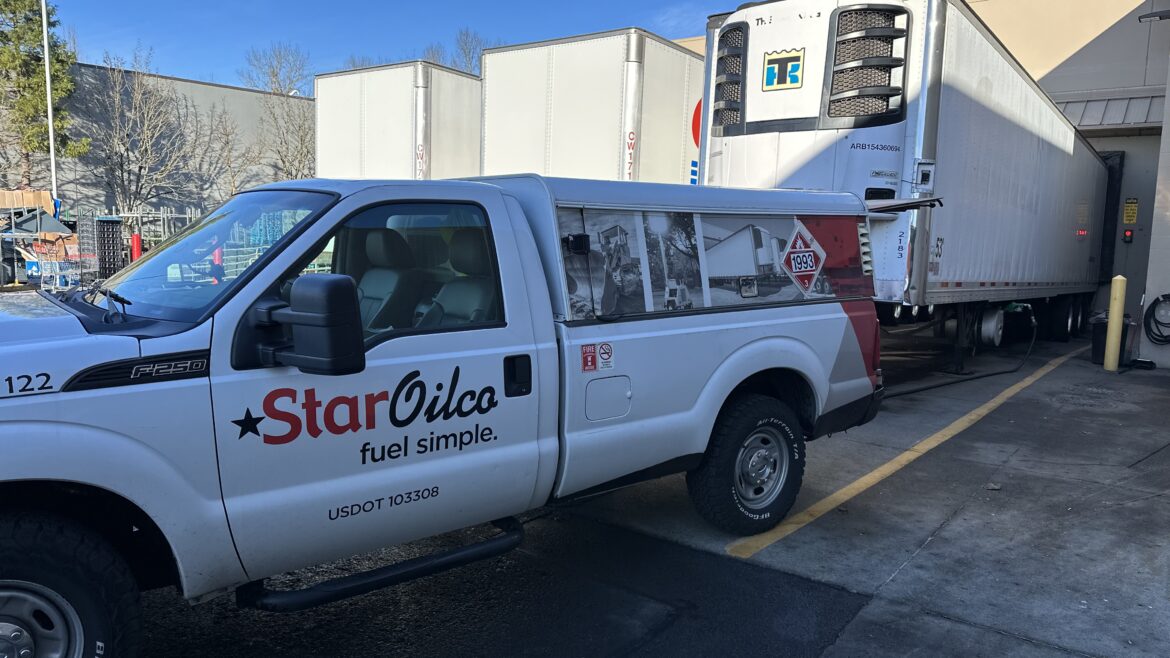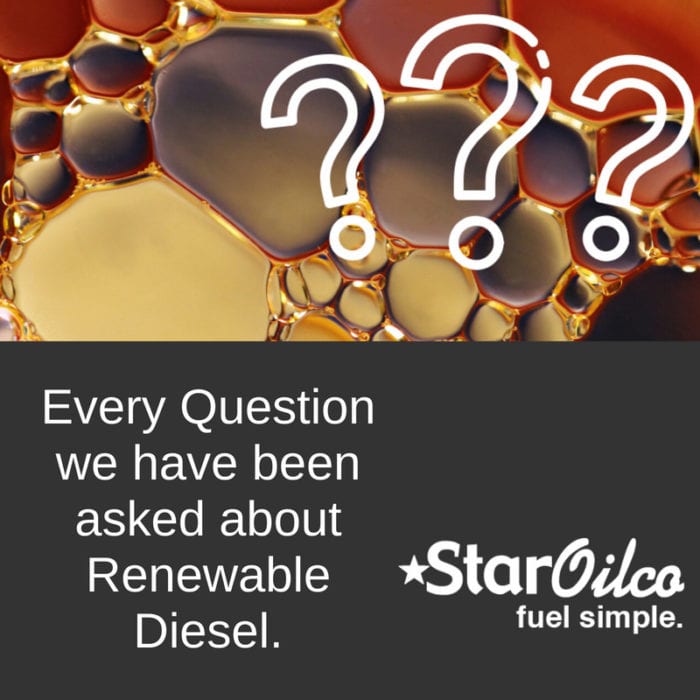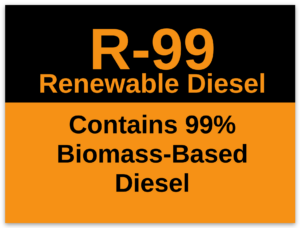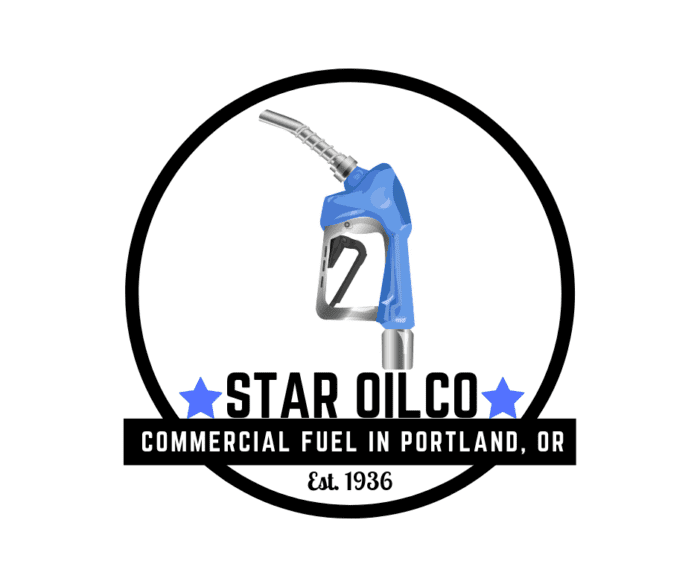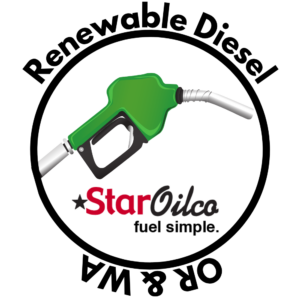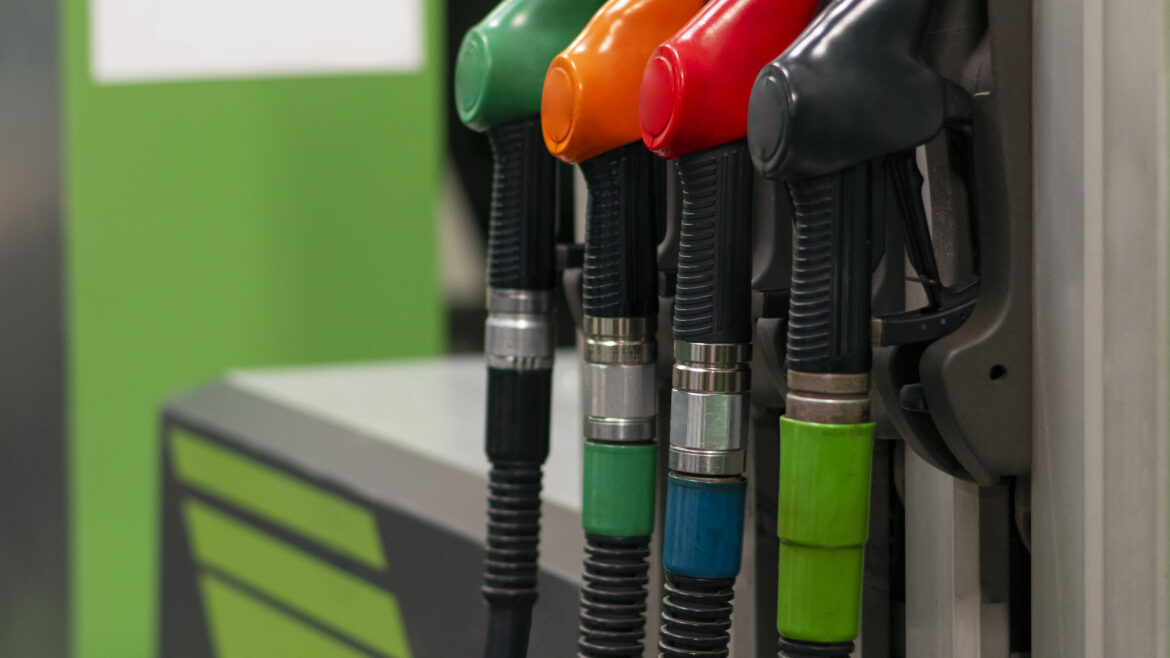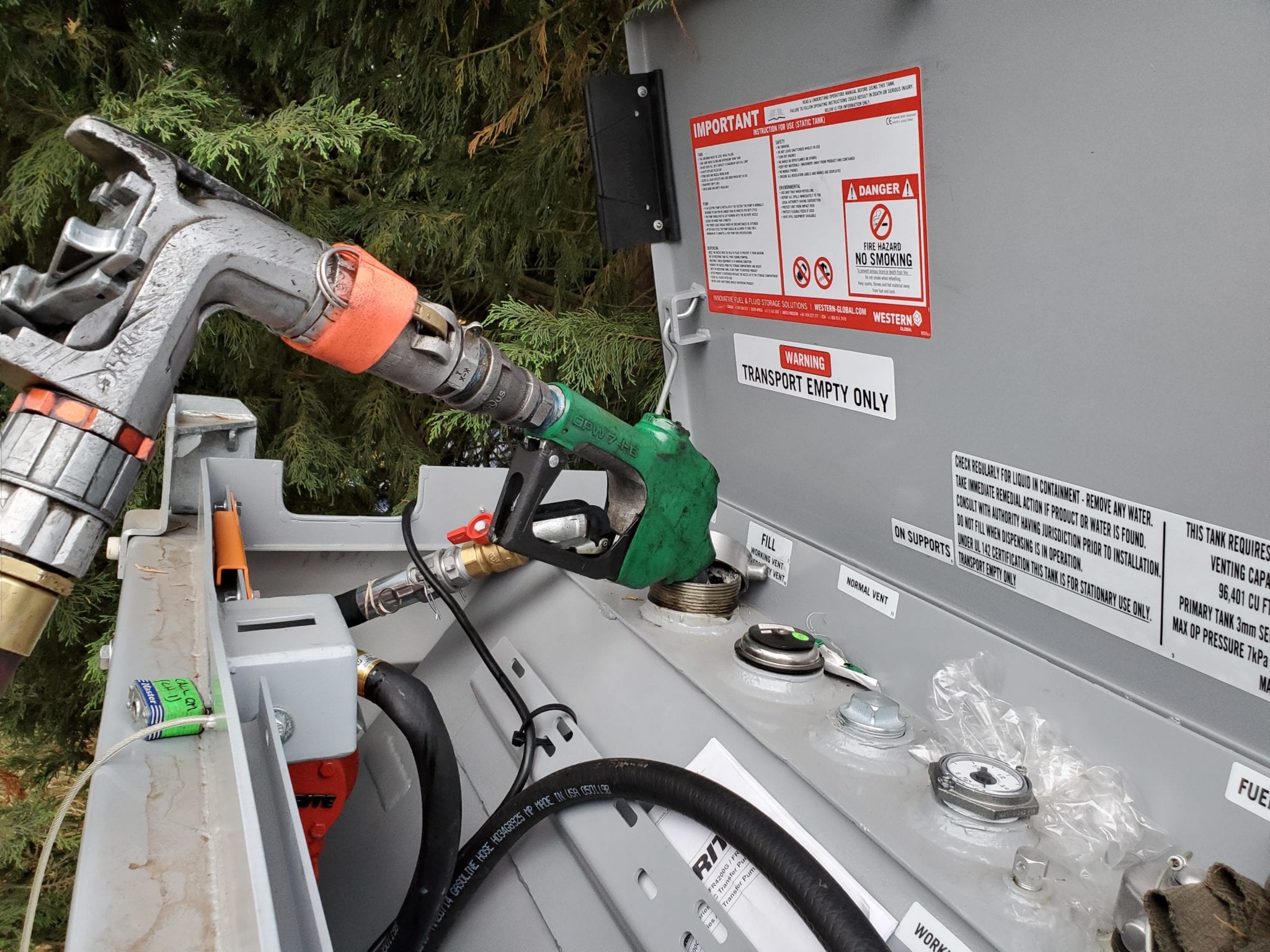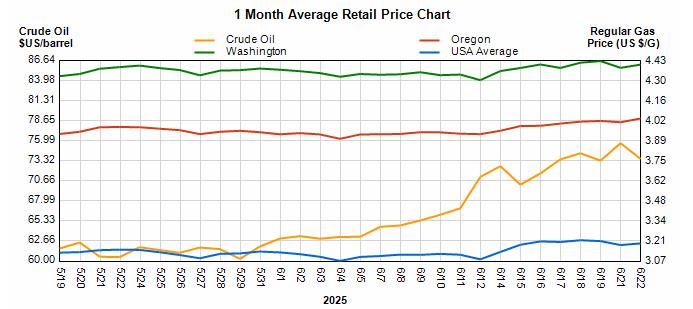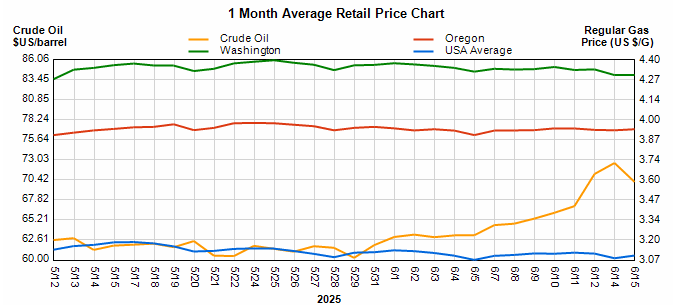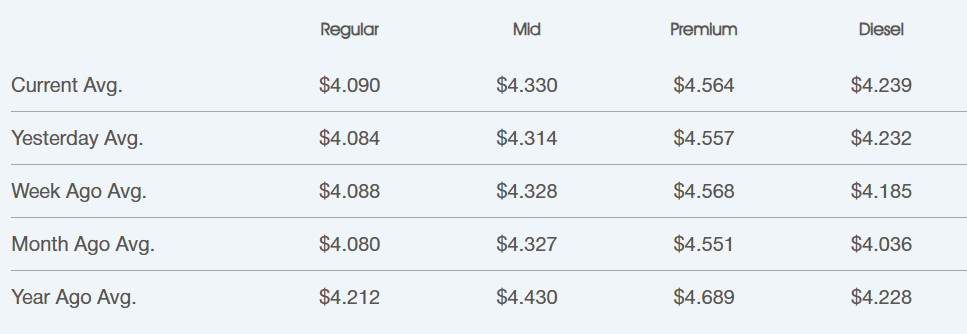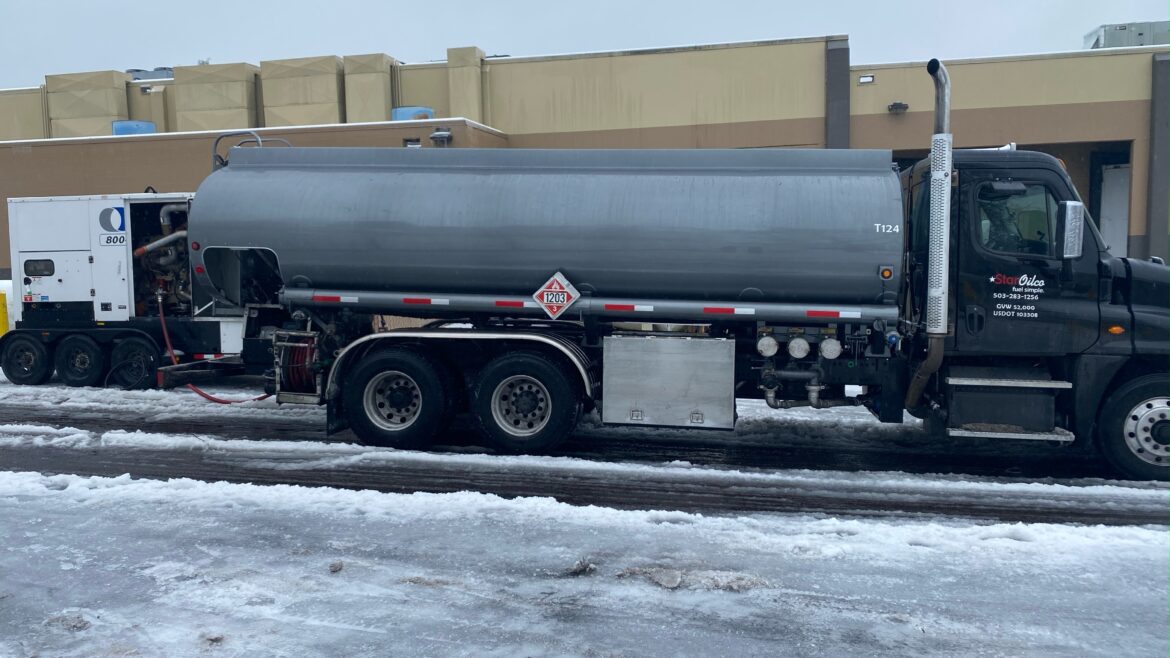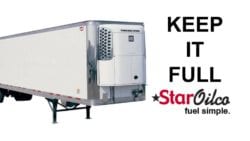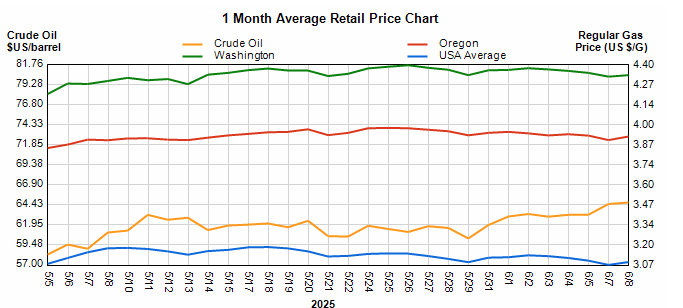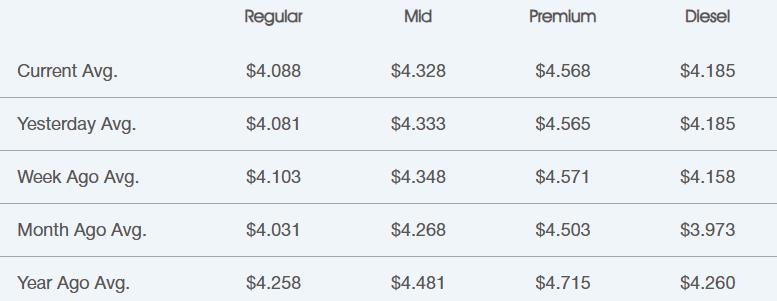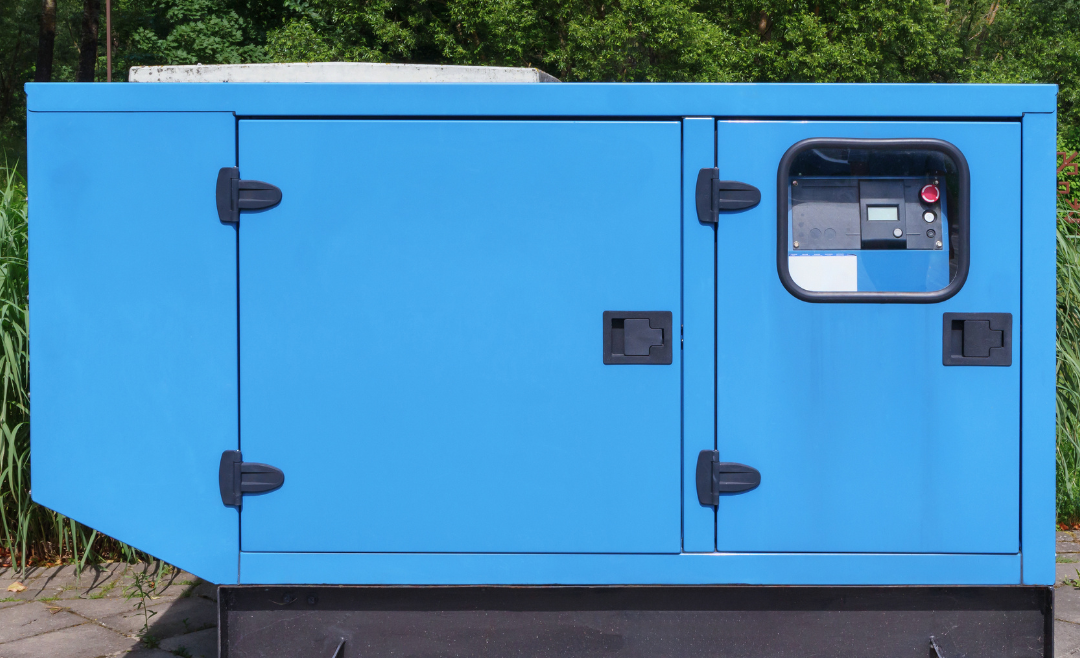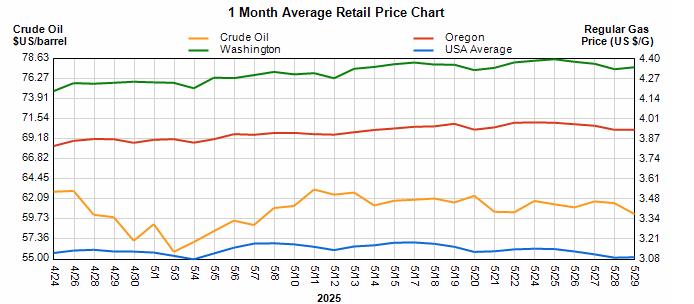Fuel Market Report: June 29th – July 5th, 2025
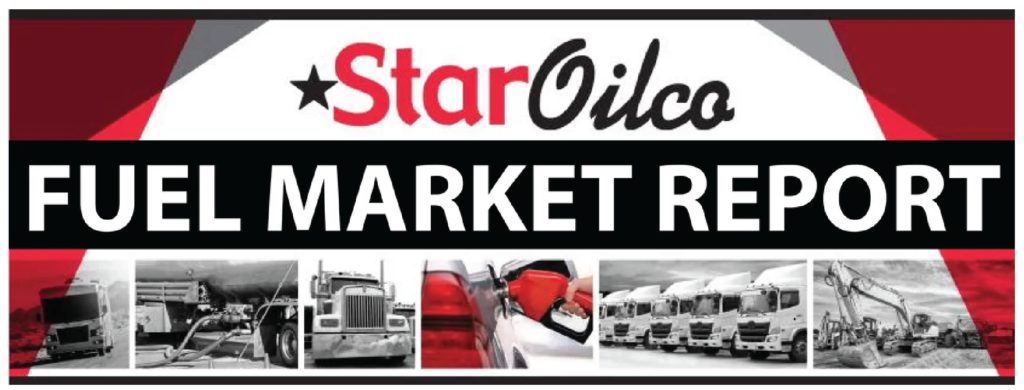
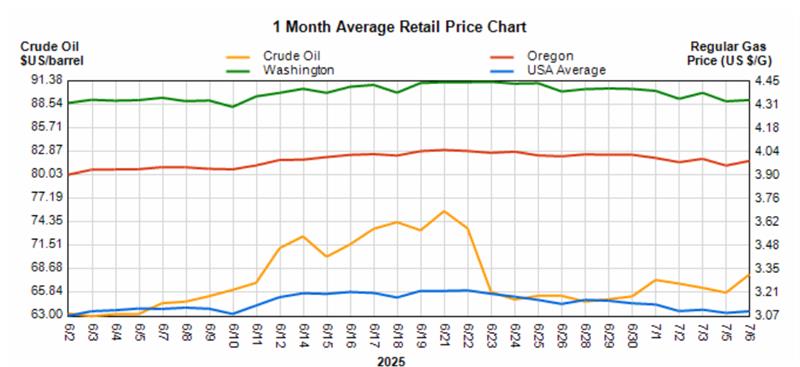
Wholesale Price Average 7/5/25
| Wholesale Low | Wholesale Avg | |
|---|---|---|
| E10 | $2.42 | $2.51 |
| B5 | $3.22 | $3.29 |
| B20 | $3.19 | $3.33 |
| R99 | $3.28 | $3.35 |
Average Retail Prices 7/5/25
| National | Oregon | Washington | |
|---|---|---|---|
| E10 | $3.14 | $4.02 | $4.41 |
| B5 | $3.68 | $4.47 | $4.95 |
Taxes
| Federal | State: OR | Local | State: WA | |
|---|---|---|---|---|
| Gas | $0.184 | $0.40 | $0-.13 | $0.494 |
| Diesel | $0.244 | $0.40 | $0-.13 | $0.494 |
Oregon Fuel Price Variance
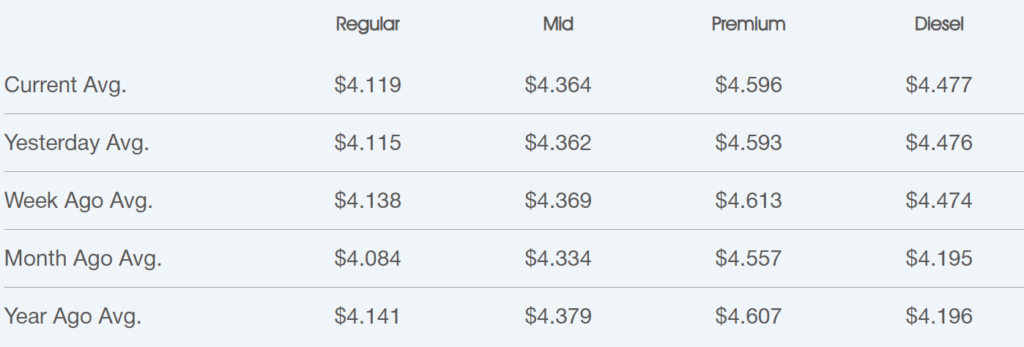
Fuel Market News
The past week brought a mix of pricing fluctuation, with gas prices down and diesel prices up. Rack averages in Portland dipped $0.05/gal for gasoline and jumped $0.02/gal for diesel. Smaller price fluctuations than weeks past, as the market is still balancing the heightened political climate in the Middle East, with much remaining uncertain for the weeks ahead. Crude oil is hovering just below $70/barrel at a current rate of $68.00/WTI Crude, and is expected to remain at this level in the weeks ahead. Retail fuel prices are still high in Oregon and Washington, with most retail stations in Portland averaging around $4.15/gal. The 4th of July brought an increase of 1.7 million drivers traveling, which is up 2.4% from last year.
Oregonians may be in store for higher diesel prices this year with the end of Blenders Tax Credits, the introduction of the Producers Tax Credit & the Oregon Climate Protection Program going into 2025. For more on this report, visit the link below.
2025 Fuel Market Outlook: Oregon
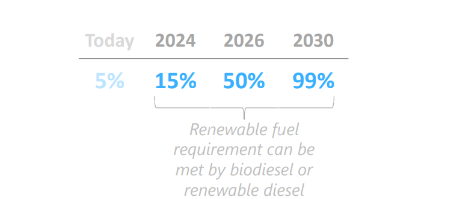
Important Note: Per the City Of Portland, “Distributors in the City of Portland are required to meet the minimum biofuel content requirements for all fuel they distribute beginning on May 15, 2024. All diesel fuel distributed to retail stations, non-retail dealers, or wholesale purchaser-consumers must include a minimum of 15% biofuel content, from either renewable diesel or biodiesel. This requirement increases to 50% on May 15, 2026, and 99% on May 15, 2030”.
Crude oil is trading below $70, at a current price of $68.00/barrel. This is $3.09/barrel higher than it was last week.
Crude oil is the main ingredient for gasoline and diesel. Per AAA, on average about 50% of what you pay at the pump is the price of crude oil, breaking down as 25% refining, 11% distribution & marketing, and 14% taxes—a helpful breakdown for consumers wondering why they are paying the prices that they pay. Crude Oil is currently trading at $68.00/barrel compared to $64.91/barrel last week and $72 a year ago.
It’s essential to recognize that fuel prices result from a complex interplay of the factors mentioned above and other regional factors. Additionally, prices may vary by specific regions within Oregon and Washington. For the most precise and up-to-date information on fuel prices and the causes for these price changes within your area, use the links below for AAA & GasBuddy.
If you have any questions, feel free to contact Star Oilco and speak to one of our fuel market advisors to discuss how the market can impact your business.


